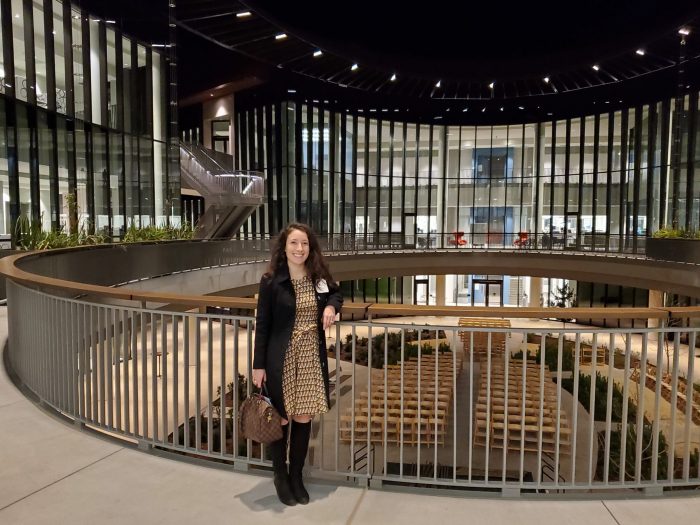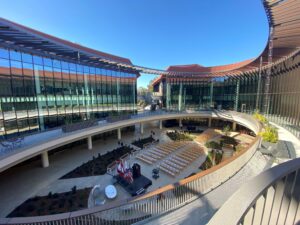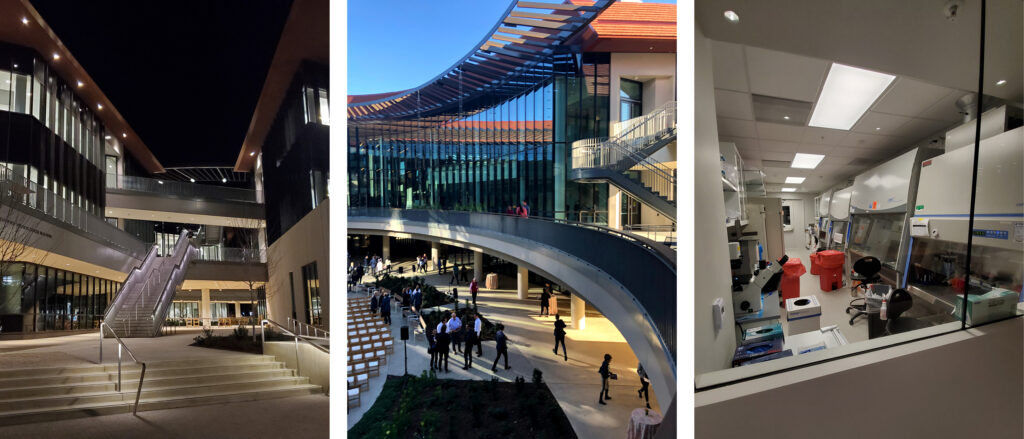The Future of Science looks molecular at Stanford University’s ChEM-H / Neuro Research Complex
Sometimes building walls can break down others. This idea inspired the creation of Stanford University’s new state-of-the-art interdisciplinary research center known as the ChEM-H/Neuro Research Complex. Serving as the new home base for two existing institutes on the Palo Alto campus—Stanford ChEM-H (Chemistry, Engineering & Medicine for Human Health) and the Wu Tsai Neurosciences Institute—the complex unites the brightest minds in chemistry, engineering, biology, and medicine to collaborate in unlocking the mysteries of the human brain under the same roof.
The world-class 235,000 square foot complex addresses a variety of long-term challenges in human health across its 40 laboratories, shared research facilities, and meeting spaces. Stanford ChEM-H researchers focus on molecules in order understand life at a chemical level and improve the well-being of the individual and species. Findings reveal ways to cure and prevent disease as well as solve long-range issues that affect humankind. Recently, researchers discovered a never-before-seen biomolecule dubbed glycoRNA. This biomolecule could play a significant role in the biology of all living things and may even hold the key to possibly treating various autoimmune diseases.
The Wu Tsai Neurosciences Institute houses a range of disciplines, including cell and molecular biology, electrophysiology and behavior, imaging and microscopy, human neuroscience and engineering, and theoretical and computational neuroscience. Its researchers are dedicated to “understanding how the brain gives rise to mental life and behavior, both in health and in disease (source).” The Institute is at the forefront of neuroscientific exploration during a critical moment in the field as new technologies transform the way we study the brain, generating groundbreaking insights about the most complex organ of the human body. Several recent findings include uncovering how rebooting an immune cells’ metabolism can protect a mice’s aging brain, development of a new brain-computer interface with the fastest typing speed to date, and answers behind the mechanisms of autism.
Additionally, the complex features the Innovation Medicines Accelerator (IMA), a group which accelerates the translation of Stanford research discoveries into new medicines and strives to expand the wider community’s knowledge of human biology. The group seeks to overcome barriers to treatment for everything from cancer and the recent COVID-19 pandemic to rare disorders that are often less researched. The accelerator is one of four on the campus which aim to achieve Stanford’s Long-Range Vision. “Our Vision amplifies Stanford’s contributions through a new model for research universities: accelerating the creation and application of knowledge to tackle the world’s great problems, anchoring research and education in ethics and civic responsibility, and promoting access and inclusion (source).” The collaborative spaces in the new complex serve to amplify this purpose and the academic community’s impact on science, education, and knowledge.

Degenkolb’s Ariel Creagh, one of the complex’s design team members, poses in the courtyard at its Dedication Ceremony.
Degenkolb Engineers performed structural engineering services for Stanford University’s ChEM-H / Neuro Research Complex along with the design team: Ennead Architects LLP, Whiting-Turner Contracting Company, and others. In designing the innovative building, collaboration was at the forefront of the efforts by Degenkolb and the wider team to ensure a flowing, cohesive space without seismic joint or shear wall interruptions. Nearly a year later, the institute, thanks to its shedding of the traditional physical and figurative barriers in academic research, continues to push the limits of human discovery and the forge the future of science for the benefit of all.


